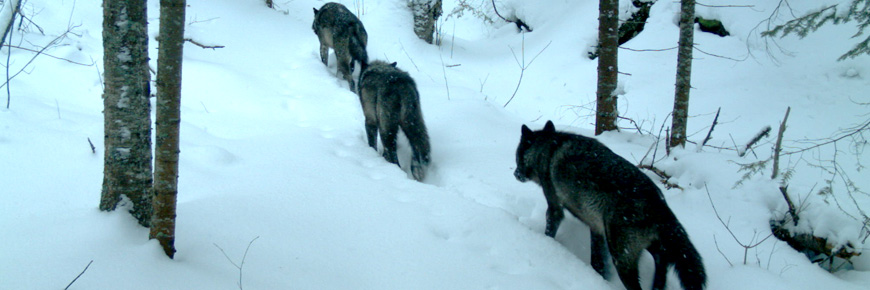
Grey wolf (Canus lupus)
Pukaskwa National Park
Grey wolves are the largest wild member of the dog family (Canidae). A male wolf can weigh up to 70 kg, while the females typically are smaller, weighing up to 50 kg. The fur of grey wolves can vary from greys and blacks, to browns and reds, to almost pure white. Thick fur, with an outer layer of guard hairs, and soft undercoat helps wolves stay warm through the harsh subarctic winter.
Wolves are territorial and live and hunt in packs of up to 12 or more related individuals, but it is not uncommon to find lone wolves or smaller groups. Packs will have a territory (home range) that spans from 75 to 2,500 km2, depending on food availability. To avoid conflicts with other packs, wolves will howl and scent mark their territory.
Within a pack, there is typically a dominant breeding pair which suppresses the breeding of other individuals by using aggression. The dominant female will have an average litter of 6 pups each spring. Under ideal conditions, these pups will be raised in a den for the first few months, and will be ready to travel with the group at just five months old.
Grey wolf status in Pukaskwa
Grey wolves occupy 74% of the park’s coastal forests. Thirteen wildlife cameras are deployed in the backcountry to assist in monitoring their presence.
Related links
- Date modified :